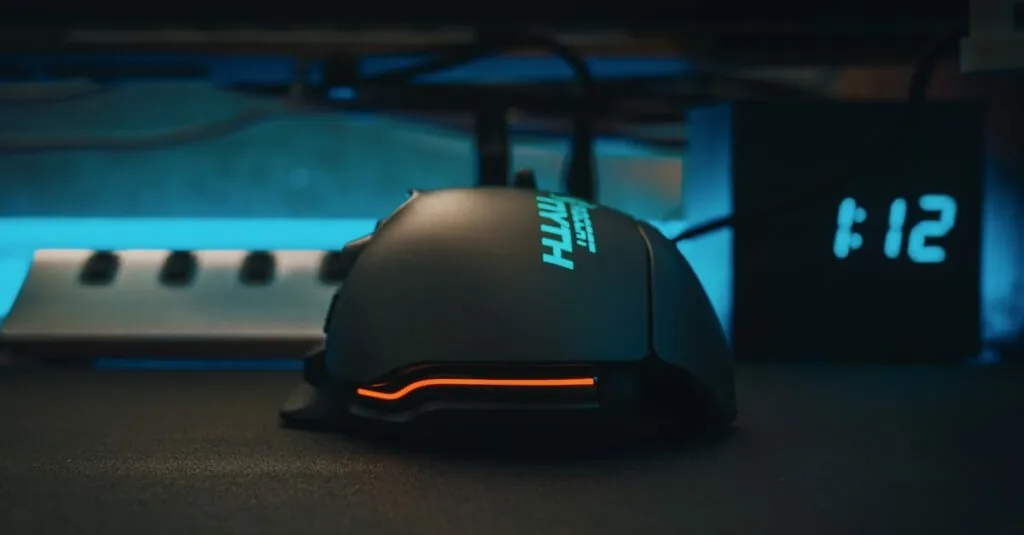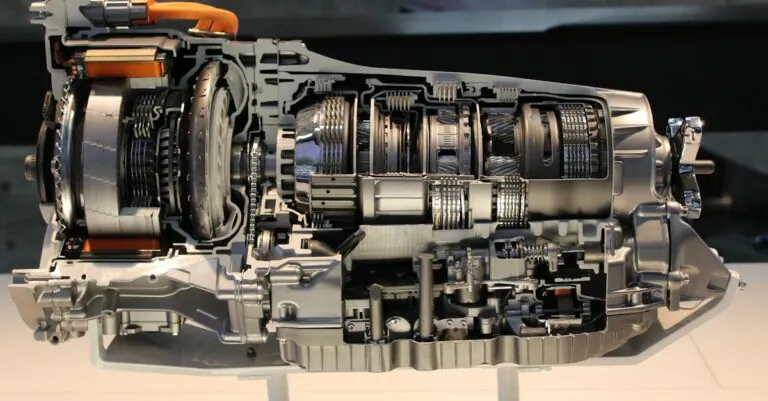Table of Contents
ToggleIn the epic showdown of wired versus wireless mice, the stakes are higher than a cat chasing a laser pointer. On one side, the wired mouse boasts reliability and zero battery anxiety, while the wireless counterpart offers the freedom to roam like a caffeinated squirrel. Which one reigns supreme?
Overview of Wired and Wireless Mice
Wired mice connect directly to a computer via USB. This connection offers stable performance with minimal latency. Reliability defines wired mice, making them ideal for tasks requiring precision, such as gaming or graphic design. Users don’t need to worry about battery life, ensuring consistent usage during long sessions.
Wireless mice operate through Bluetooth or radio frequency technology. This feature provides increased mobility, allowing for use at a distance from the computer. Convenience stands out with wireless options, as they eliminate cord clutter on the desk. Mobility advantages make wireless mice attractive for users who travel frequently or prefer a clean workspace.
Performance differs between the two types. Wired mice generally deliver faster response times than wireless counterparts, appealing to gamers and professionals. Wireless mice have improved significantly in recent years, with many featuring low-latency technology suitable for competitive tasks.
Both wired and wireless mice come in various ergonomic designs. Comfort is crucial, particularly for extended use, so users should consider their hand size and grip style when selecting a mouse. Features such as customizable buttons and DPI settings also vary, providing options for tailored user experiences.
Price points vary significantly between wired and wireless mice. Generally, wired options tend to be more budget-friendly, while high-end wireless mice may include premium features like adaptive DPI settings or extended battery life. Users seeking affordable yet reliable choices may find wired mice better suited to their needs.
Both wired and wireless mice present unique benefits. Different scenarios highlight distinct advantages, ensuring users can choose the right device based on personal preferences and requirements.
Advantages of Wired Mice
Wired mice offer several key advantages that can enhance user experience. Their reliability stands out in various applications.
Stability and Reliability
Stability defines wired mice. Users benefit from a direct connection, ensuring minimal lag during tasks. In scenarios like gaming or graphic design, consistent performance proves crucial. Wired mice maintain steady tracking without interference or dropouts. Many users prefer this dependability for precision and accuracy. Performance benchmarks consistently show that wired options outperform wireless counterparts in response times. They deliver immediate feedback, which is particularly beneficial when quick reflexes matter.
No Battery Dependency
Battery dependency poses a challenge for wireless mice. Wired mice eliminate this concern entirely. Users can work for hours without interruptions related to battery life. Many professionals appreciate this aspect, especially during long sessions. Direct connection means no need to recharge or replace batteries. Users enjoy uninterrupted workflow, saving time on maintenance. This convenience aligns with the demands of busy environments. Wired mice also become cost-effective over time since users avoid battery purchases.
Advantages of Wireless Mice
Wireless mice offer several notable advantages that enhance user experience. Mobility stands out as the primary benefit, allowing users to work from various positions without being tethered to their devices. Users can move freely within their workspace, improving flexibility and comfort during long tasks.
Portability and Convenience
Portability defines the appeal of wireless mice. Lightweight designs make them easy to transport, fitting effortlessly into bags for on-the-go professionals or gamers. Eliminating cords reduces clutter, creating a neater workspace. Users can set up efficiently in different locations without fumbling with cables. Many models feature rechargeable batteries, offering convenience by reducing the need for frequent battery replacements. Easy connectivity via Bluetooth or USB receivers enhances the overall user experience, ensuring a seamless transition between devices.
Advanced Features
Advanced features distinguish wireless mice within the market. Many models now support customizable buttons, allowing users to tailor functions according to their preferences. Some wireless mice offer adjustable DPI settings, providing precise control for various tasks from gaming to graphic design. Ergonomic designs improve comfort during extended use, promoting better wrist posture. Furthermore, low-latency technology minimizes response times, ensuring performance that competes closely with wired alternatives. Users benefit from intuitive software that enhances functionality, making wireless mice versatile tools for different applications.
Performance Comparison
Wired and wireless mice exhibit distinct differences in performance. Both types offer unique advantages that cater to specific user needs.
Latency and Response Time
Wired mice provide superior latency and response times. Their direct connection ensures immediate feedback, crucial for tasks requiring quick reflexes, such as gaming. Studies reveal that wired mice deliver response times as low as 1 millisecond, minimizing lag. Wireless alternatives, while improved in latency due to advancements in technology, typically still range from 5 to 20 milliseconds. Low-latency wireless models aim to bridge the gap, but they often can’t match the instantaneous nature of wired connections. Users demanding flawless performance for competitive scenarios tend to prefer wired options for the most reliable experience.
Accuracy and Precision
Wired mice maintain high accuracy and precision due to stable connections. This type of mouse promises consistent tracking across various surfaces, making them favorable for professional graphic design or gaming precision. Wireless mice, though, have made strides in technology, leading to enhanced tracking capabilities and precision. Many wireless models feature advanced sensors and adjustable DPI settings, allowing customization for diverse tasks. Despite these advancements, wired mice sustain slight advantages in tracking performance, especially under demanding workloads. Users prioritizing accuracy often choose wired mice for tasks requiring the utmost precision.
Cost Considerations
Cost factors play a significant role in deciding between wired and wireless mice. Price varies based on features and brand reputation.
Price Differences
Wired mice tend to be less expensive than wireless options. Basic models start around $10, while more advanced versions can reach $50. Wireless mice generally range from $20 to $150. Premium wireless models may offer additional features like ergonomic designs or customizable buttons, impacting their overall cost. Considering price alone, wired mice provide an economical choice for users focused on functionality without frills.
Long-Term Value
Wired mice often offer long-term value due to their durability and lack of battery dependence. Users avoid ongoing battery costs and interruptions associated with switching batteries. Wireless mice, however, usually feature rechargeable batteries that add convenience initially but might result in cost over time if replacements are needed. In professional environments, consistent performance from wired mice translates into productivity savings, which justifies the upfront investment. Ultimately, balancing initial costs with long-term benefits encourages thoughtful decision-making when purchasing a mouse.
Choosing between a wired or wireless mouse ultimately depends on individual needs and usage scenarios. Wired mice excel in precision and reliability making them ideal for gamers and professionals who demand top performance. Their consistent response times and lack of battery concerns provide a seamless experience during critical tasks.
On the other hand wireless mice offer unmatched convenience and portability allowing users to work freely without the hassle of cords. Their advancements in technology have closed the performance gap significantly making them suitable for a broader range of applications.
By weighing the benefits of each type users can make informed decisions that align with their preferences and work styles ensuring they select the right tool for their computing needs.







